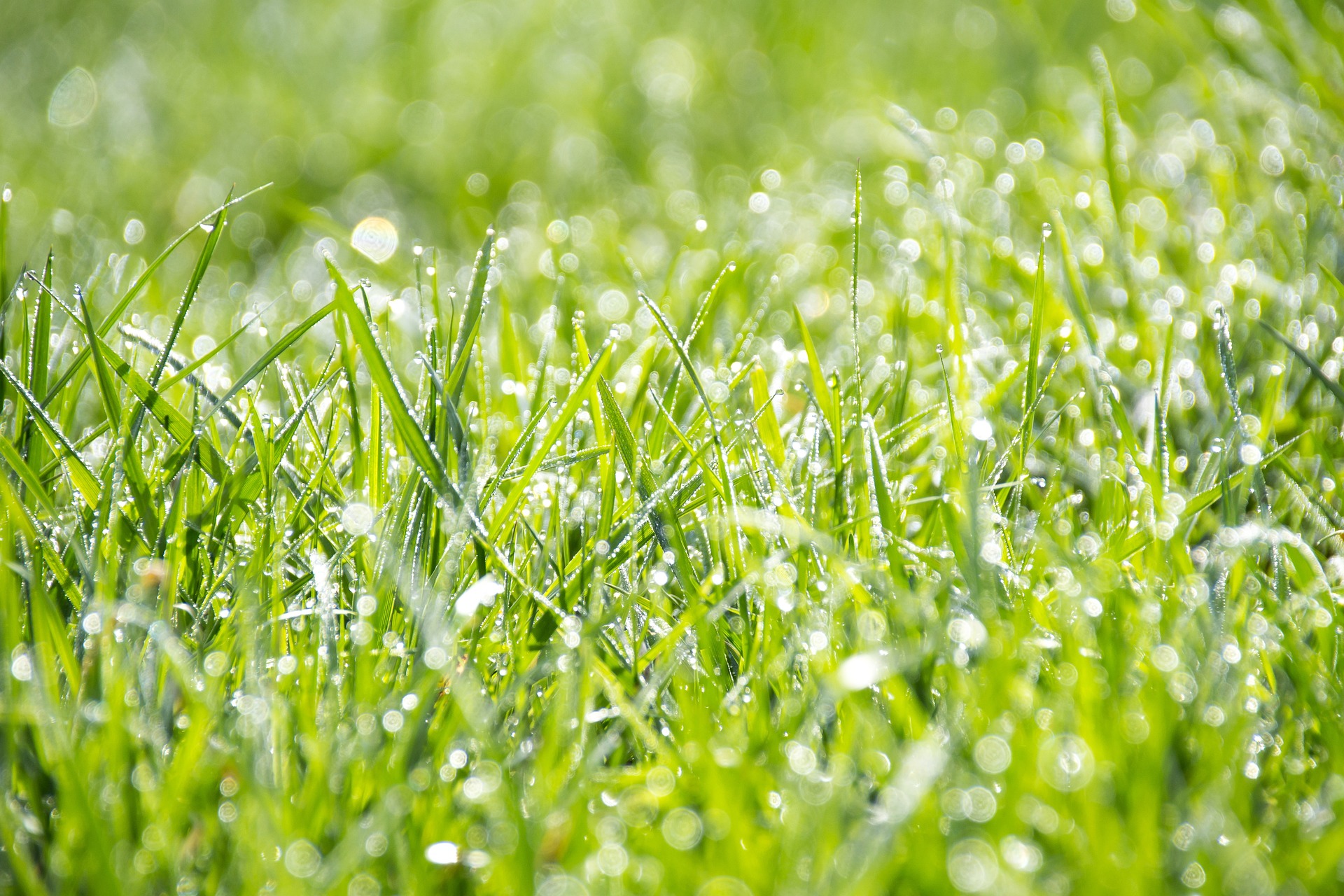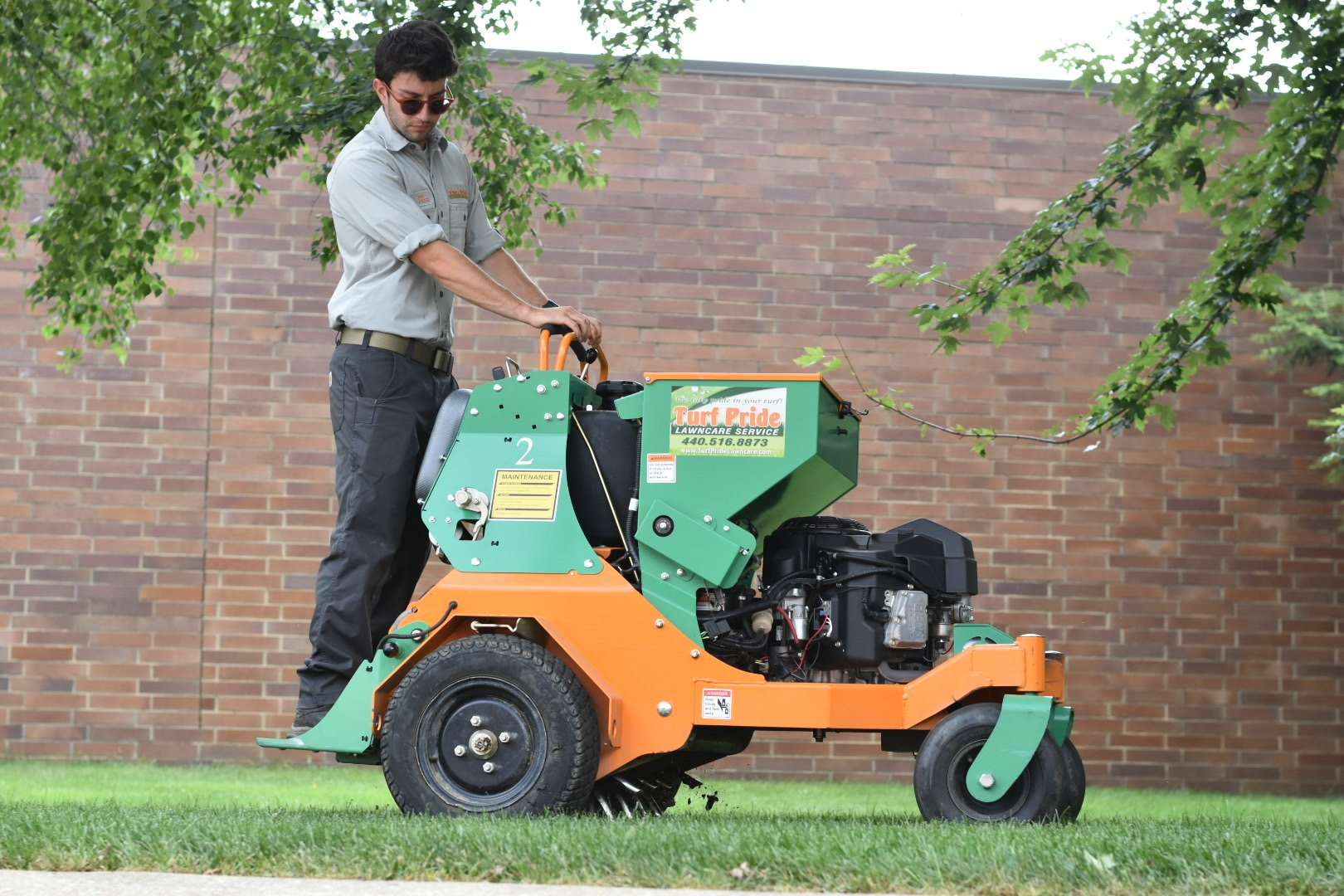/Bare%20spots%20and%20weeds%20on%20lawn.jpg)
Japanese Beetles and Their Effects on Your Yard
In the picturesque home landscapes of Northeast Ohio, where lush greenery and vibrant blooms abound, you really can have the chance to get outside and take in the seasons.
You can kick back and enjoy your scented roses and the birds that visit your garden. You can walk your bare feet through the thick, green grass and take in the color and fresh air.
But there’s one pest that can throw a wrench in your plans in all stages of its lifecycle: the Japanese beetle.
These voracious pests, known for their insatiable appetite and destructive feeding habits, can wreak havoc on a wide range of landscape plants, from ornamental trees and shrubs to beloved garden favorites, as well as your lawn in their younger phases of life.
Let’s delve into the effects of Japanese beetles on Northeast Ohio yards, exploring Japanese beetle lawn damage on different plant species and the lifecycle that begins with tehri white grub stage.

Get to Know Japanese Beetles
Japanese beetles are an invasive species native to Japan that were first discovered in the U.S. in 1916. Since then, they have spread across much of the country, including Northeast Ohio, where they are a common nuisance for homeowners.

You can easily recognize these beetles by their metallic green bodies and copper-colored wings, making them a pretty distinctive sight during the summer months.
Japanese beetles are notorious for their indiscriminate feeding habits, devouring the foliage, flowers, and fruits of many landscape plants with gusto. In Northeast Ohio, some of the most commonly targeted plants include roses, ornamental trees such as crabapples and lindens, shrubs like hydrangeas and viburnums, and fruit-bearing trees such as cherry and plum.
These pests skeletonize leaves by consuming the soft tissue between leaf veins, leaving behind a lacy, skeletonized appearance that detracts from the beauty of affected plants. Additionally, Japanese beetles can significantly reduce fruit yields and stunt the growth of ornamental trees and shrubs if left unchecked. But you’re probably wondering, “Do Japanese beetles eat grass?” Let’s learn more.
Do Japanese Beetles Eat Grass?
While adult Japanese beetles feed on a variety of plants, their larvae, known as white grubs, pose an additional threat to lawns and turfgrass by feeding on grass roots and causing patches of dead or dying grass, yellowing, and wilting in impacted areas.

In fact, your grass can look just fine on the surface, while grubs are eating away at the lawn roots. And this can not only make your lawn look bad down the road, but it also cuts off the pathways of vital water and nutrients to your lawn. And that doesn’t help; your lawn needs those things to survive and thrive.
/technician%20inspecting%20customer%20lawn.jpg?width=5168&height=3448&name=technician%20inspecting%20customer%20lawn.jpg)
Can Japanese beetles ruin your lawn? Over time, severe grub infestations can result in widespread lawn damage, with large sections of turfgrass becoming brown and dead. Additionally, the presence of white grubs can attract predators such as skunks and raccoons, which may further disrupt the lawn as they dig for grubs in search of a meal
Japanese Beetle Life Cycle
Understanding the lifecycle of Japanese beetles and Japanese beetle lawn damage is crucial for effective management and control.
In Northeast Ohio, adult beetles emerge from the soil in late spring to early summer, typically around mid-June, and remain active for several weeks. During this time, they mate and feed voraciously on foliage, laying eggs in the soil that hatch into white grub larvae.
These larvae feed on grass roots throughout the summer and fall before overwintering in the soil and pupating the following spring.
Japanese Beetle Lawn Damage
Signs of grub damage in lawns can manifest in various ways, often depending on the severity of the infestation and the type of grass species present.
Let’s look at some of the common Japanese beetle lawn damage indicators.
Thinning or Patchy Grass
One of the earliest signs of Japanese beetle lawn damage by grubs is the appearance of thinning or patchy areas in the lawn.
As grubs feed on grass roots, they weaken the turfgrass, causing it to become less dense and more susceptible to damage from environmental stressors such as drought or foot traffic.
/Technician%20showing%20brown%20spot%20on%20lawn.jpg?width=872&height=491&name=Technician%20showing%20brown%20spot%20on%20lawn.jpg)
Yellowing or Wilting Grass
Areas of the lawn affected by grub damage may exhibit symptoms of stress, such as yellowing or wilting grass.
This discoloration is often a result of the root damage caused by grubs, which impairs the lawn's ability to absorb water and nutrients from the soil. It’s another common Japanese beetle lawn damage sign.
Spongy or Loose Turf
As grubs continue to feed on grass roots, the soil beneath affected areas may become loose and spongy to the touch. This is because grubs tunnel through the soil as they feed, disrupting the root system and causing the turf to lose its firmness and stability.
If you walk across your lawn and feel that spongy or loose texture, this could be a sign of Japanese beetle lawn damage.
Presence of Skunks or Raccoons
Grubs are a favorite food source for skunks, raccoons, and other wildlife, which may dig up the lawn in search of a meal.
If you notice frequent digging or turf damage caused by animals, it could be a Japanese beetle lawn damage sign of a significant grub infestation.
Lifting or Rolled-Up Sod
In severe cases of grub infestation, the roots of the turfgrass may become so damaged that they detach from the soil, causing patches of grass to lift or roll up like a carpet.
This is a clear Japanese beetle lawn damage indicator of extensive grub activity below the surface.
Adult Beetles
While not a direct sign of Japanese beetle lawn damage by grubs, the presence of adult Japanese beetles in or around the lawn may indicate the likelihood of a grub infestation.
Adult beetles lay eggs in the soil, which hatch into grub larvae that feed on grass roots.

Dead or Dying Grass
In severe cases of Japanese beetle lawn damage, affected areas of the lawn may turn brown and die off completely as the grass becomes unable to recover from the extensive root destruction caused by grubs.
This is something you don’t want to let grubs do, so controlling them early can help prevent this.
Stop Japanese Beetle Lawn Damage With Proper Control
It's essential to monitor your lawn regularly for signs of Japanese beetle lawn damage by grubs, especially during the spring and fall when grubs are most active.
If you suspect a grub infestation, consider conducting a soil inspection or contacting a lawn care professional for assistance in identifying and managing the issue. Early detection and intervention are key to preventing significant damage and restoring the health and vitality of your lawn.
June and July is a great timeframe for early prevention of grubs. This is best done with a preventive treatment to your lawn by a lawn care pro. Turf Pride offers a grub solution that provides season-long control. This means it lasts all through summer and fall. We will also come back and inspect your lawn in the fall to ensure grubs haven’t come back.
Plus, we offer other lawn care services, such as fertilization and weed control, that can enhance your lawn’s health and help take care of any grub damage.

Can Japanese Beetles Ruin Your Lawn? Yes, But Turf Pride Can Help Stop Them
In Northeast Ohio, the presence of Japanese beetles poses a significant challenge for homeowners striving to maintain healthy and beautiful landscapes. And all you want to do is enjoy your yard. You don’t need the stress and damage these pests can cause.
With their destructive feeding habits and voracious appetites, Japanese beetles and white grubs can wreak havoc on a wide range of landscape plants and lawns if left unchecked.
Let Turf Pride help. We know exactly what to look for when it comes to these pests and how to get a handle on them before they become destructive. We can mitigate the damage caused by these invasive pests and protect your yard, restoring beauty and vitality to their outdoor space. Reclaim your landscape from the clutches of Japanese beetles and give us a call today.
/technician%20showing%20customer%20yard%20treatment%20options%20with%20kids%20in%20background.jpg?width=4708&height=2653&name=technician%20showing%20customer%20yard%20treatment%20options%20with%20kids%20in%20background.jpg)
Ready to learn why Turf Pride could be your choice for grub control services in Northeast Ohio? We’d love to learn more about you and help you have the best lawn on the block. Get started today with a free quote. Together, we can prepare a customized plan that is perfect for you.
Source: Japanese Beetle


